How to grow a pumpkin?
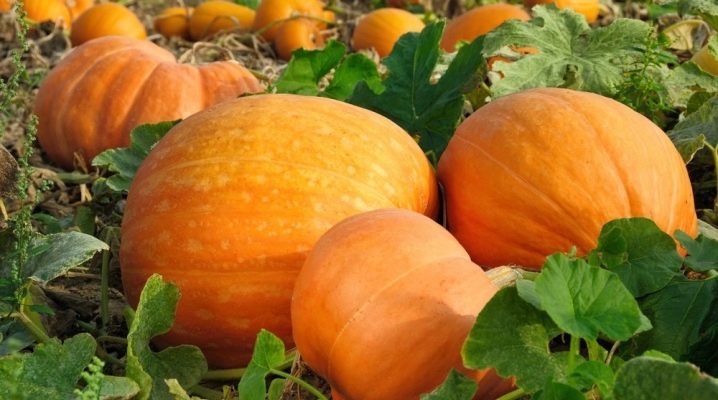
Pumpkin is a high-yielding crop with a huge vegetative mass. This vegetable is very healthy and tasty, so it takes pride of place in the garden. The plant is unpretentious, does not require special care. However, in order to get a good harvest of pumpkin, you need to follow simple agronomic techniques and listen to the advice of experienced gardeners.
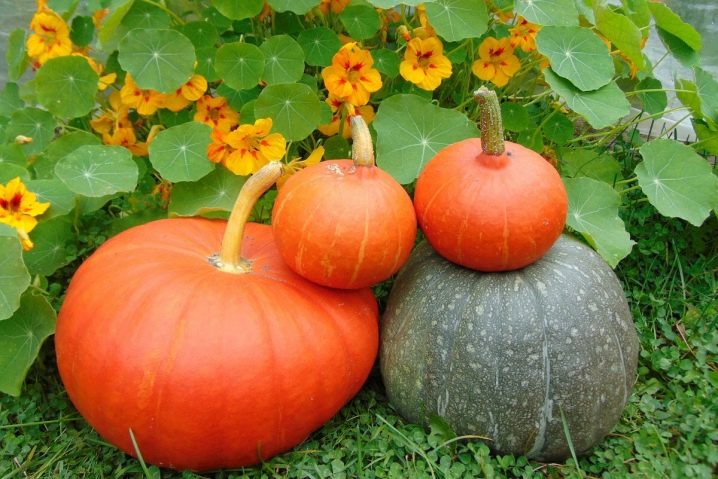
Basic requirements for conditions
Pumpkin is rather unassuming to growing conditions, but you need to know the peculiarities of its cultivation in a personal plot, in the country. Fertility requirements are low, this vegetable grows in any soil.
A strong healthy plant tolerates short-term drought relatively easily, and pumpkin weeds are not terrible, it itself suppresses their growth. But still, in order to get a rich harvest, it is necessary to properly prepare the soil, observe the sowing time and take care of the plants, following simple agronomic techniques.
This melon culture develops well only on the sunny side, in the warmth. Watering is required for young seedlings, the formed plant has strong branched roots and finds moisture in the soil. Excessive watering can lead to fruit rot.
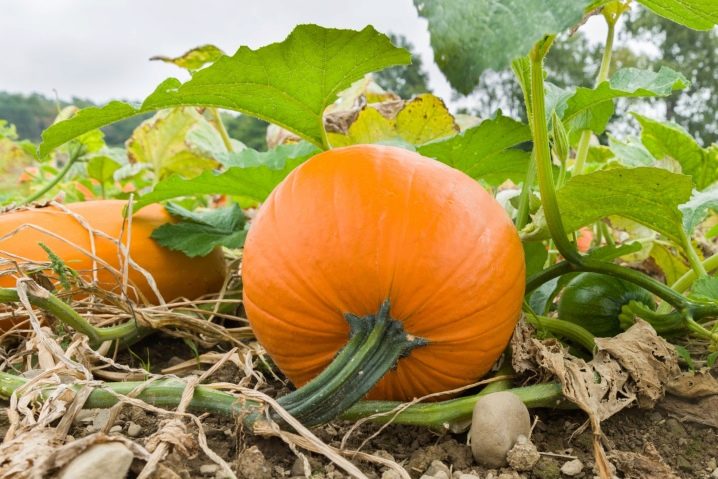
Pumpkin grows well in fertile soil, of all fertilizers, it prefers compost or manure.
Sowing dates
In the middle lane, dry seeds are sown on May 15-20, germinated - on May 25-31, when the soil warms up well. And the seedlings should be planted after June 5, by which time the threat of recurrent frosts has passed. It is imperative to cover the crops. Pumpkin is a thermophilic plant.

Landing
Pumpkin loves fertile soil, but can grow on any. Only in this case will it give a poor harvest, small fruits, the plant will develop poorly. The introduction of a sufficient amount of organic and mineral fertilizers will make any type of soil suitable for it. Like all melons, this vegetable is especially responsive to organic matter, giving preference to humus.
Seeds
Pumpkins are usually sown with seeds and grown as seedlings for earlier consumption. Thanks to seedlings, pumpkin is grown in northern regions or temperate climatic regions of Russia. Seeds are sown in advance. Usually a month before the appointed time for planting the plant in the ground. The diameter of the pot is about 10-14 cm, the plants need a lot of space.
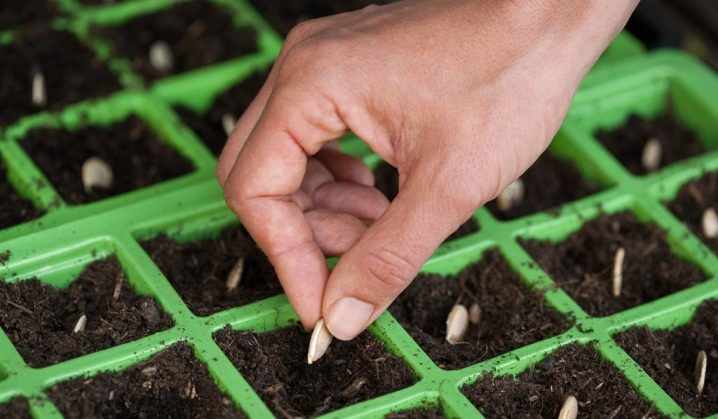
Small holes are made for planting. Due to the fact that the pumpkin has large stems with shoots that spread along the ground, the holes are made at a good distance. Between the rows, it can sometimes be - 1.5 m, between the plants themselves - 1 m. An inexperienced gardener may think that such a distance is too long, but this is not at all the case. The density of leaves in one place will negatively affect growth and development. Few will be set, and they will be small, the yield will be low. In the hole, half a bucket of compost or manure, 12 g of fertilizer for pumpkin crops are added, everything is mixed with the ground.
Seeds are sown dry, 2-3 per hole, sowing depth is 3-5 cm. After germination, weaker shoots are removed. For quick germination, the seeds are soaked in warm water for five hours. The wells are watered abundantly, cover the bed with covering material.

Seedlings
Pumpkin seedlings are planted only in well-heated ground. As a rule, for temperate latitudes this is the beginning of June. Before planting, it is hardened, irrigation is reduced, and aired.Only healthy and strong seedlings are suitable for planting. For planting, it is also necessary that the plant has at least 3-4 true leaves. These usually appear in 25-30 day old seedlings. It is planted carefully so as not to destroy a clod of earth with roots, otherwise the plant will be sick for a long time. After planting, it must be watered - one and a half liters of cold water per hole.
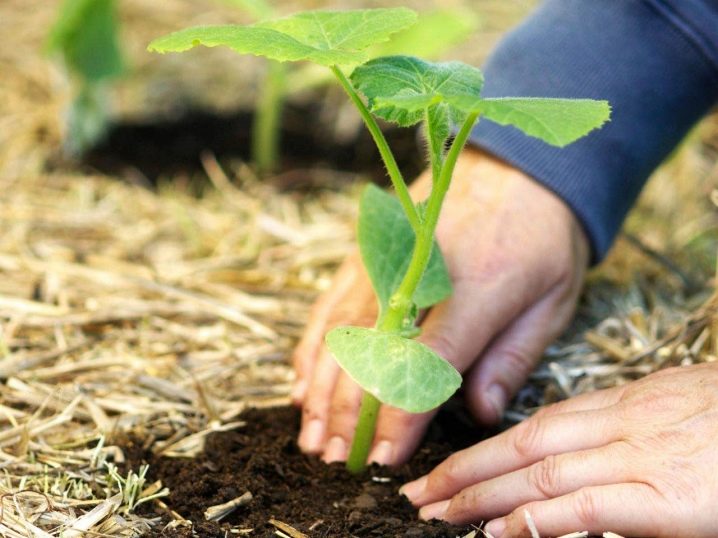
It is necessary to plant seedlings in cloudy weather, preferably in the late afternoon. If it's hot, then the first few days the bed is shaded from the sun.
Growing methods
Pumpkin loves sunlight and warmth, as well as a plant with a huge vegetative mass and requires a large area of nutrition. In the garden, in the summer cottage, in the open ground, it takes up a lot of space. And many inexperienced gardeners refuse to grow this vegetable on their small plot. And completely in vain, pumpkin is useful, and, having shown imagination, it can be grown on a compost heap, in a barrel, in bags, on a trellis, along a fence on the street, on a warm garden bed, in a trench.
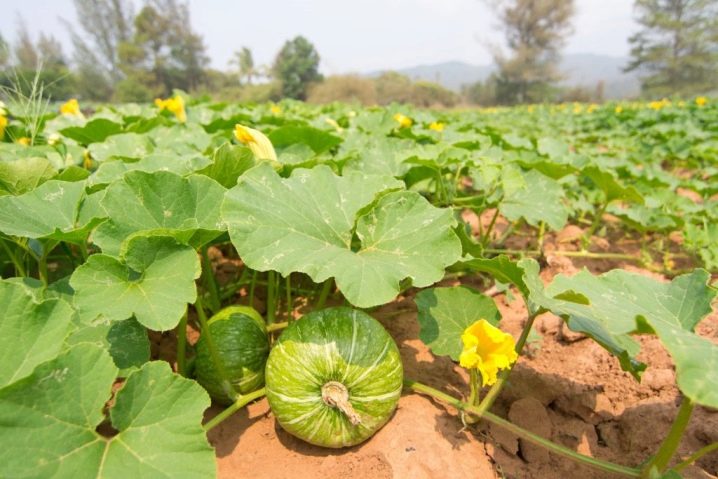
The pumpkin can be grown on the balcony. The plant will bear fruit if you create excellent conditions for it, plant a variety intended for the balcony. It can also be decorative pumpkins. To grow one plant, you need a container with a volume of 50 liters. The barrel is filled one third with drainage material, then fertile soil is added. Seedlings are planted and then looked after, watering, weeding and feeding as needed.

But, according to the majority, growing pumpkins on the balcony entails unjustified expenses, and, rather, it is entertainment, getting positive emotions, than waiting for a good harvest.
In a greenhouse, pumpkin is rarely grown, as it requires a lot of space. In a greenhouse, seedlings can be grown without any problems. Agrotechnology is the same as when growing seedlings on a windowsill. Plant in the greenhouse from May 1. Before sowing, you need to prepare the holes, fill them with humus, add fertilizers, water with warm water and plant 2 seeds at a distance of 10 cm.When the seedlings have 3-4 true leaves, you can transplant it into the ground.
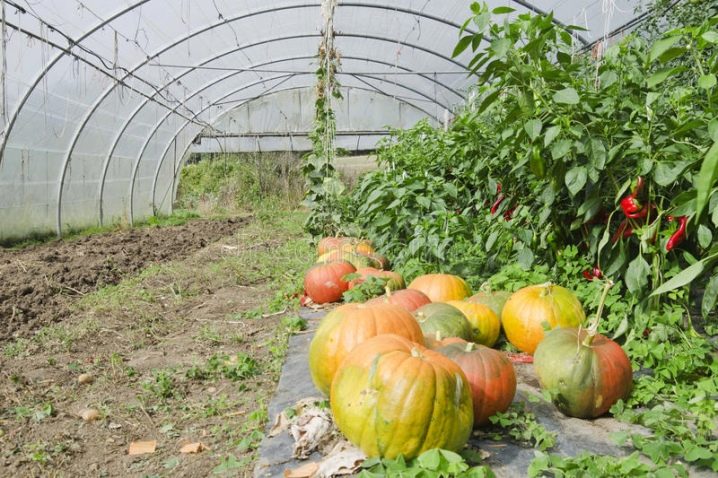
In the garden
Never plant a pumpkin in a garden where squash or pumpkins grew last year. It is best to plant the pumpkin outdoors after potatoes, legumes, tomatoes, or cabbage. The place must be sunny, dry, and at night it must be warm in the garden. Do not spare fertilizer for such a bed. You may need about two buckets of sawdust, humus or manure, a kilogram of wood ash and a glass of nitrophoska. The soil is dug up to a depth of 50 cm and watered with hot water. After sowing the seeds, the bed is covered with a film until shoots appear.
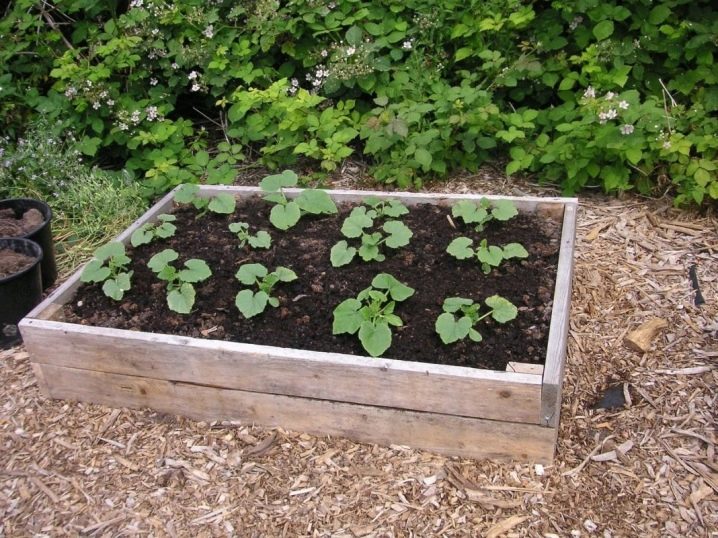
Of course, pumpkin grows better in a warm garden bed, which is prepared in the fall. At the bottom of the trench, branches, waste, mowed grass, leaves, then humus and earth are laid.
On the trellis
If the summer cottage is small, but you still want to grow a pumpkin, then you can arrange the pumpkin lashes on the trellis. Only the trellis must be strong so that the fruit does not break it. You can throw pumpkin whips over the fence. As soon as the fruits begin to grow, they must be placed in the nets and tied to the fence. It is necessary to remove weak shoots and leaves from below in time. If the plants are not thickened and receive a huge amount of sunlight and heat, then the pumpkin grows beautiful and sweet.

On the compost heap
To reduce the maturation of the compost and to decorate the place on your site, summer residents plant pumpkin seedlings in a compost heap. A solution to two problems at once. The roots will grow all over the pile, and the large leaves will cover the pile from the sun. The compost heap acts as a greenhouse and provides nutrients for pumpkin development. It is much easier to look after such a bed: you do not need to weed, loosen, you can mulch the soil with weeds, putting them in a heap.

In a barrel or bags
Growing pumpkin in a barrel has its own secrets. The barrel is filled with fertile soil in the fall or spring.Twigs, thick stems, healthy plant residues and nettles are placed on the bottom of the barrel, and everything is sprinkled with rotted compost. In early June, seedlings are planted, one or two plants, soil and compost are added. The soil in the barrel dries out faster than on the garden bed, so the pumpkin should be watered and mulched regularly and abundantly. The barrel, heated in the sun, serves as a heat accumulator. Shoots do not crawl over the site, they hang from the barrel.

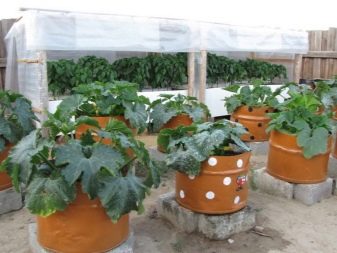
In the same way, pumpkin is grown in bags, buckets and other containers.
Galina Kizima's method
This method saves labor costs when working on site. "A garden without hassle" is the basis of her method. The author proposes to refuse to dig up the soil, weeding. Mulch all plantings. Many of the recommendations can be applied when planting a pumpkin. So, according to the method of Galina Kizima, preparation for sowing should be started in the autumn. They dig trenches to a depth of two shovels and fill them with grass, weeds, and manure.
Fertile soil is added in the spring. And pumpkin seedlings are planted on this warm bed. Even better, according to Galina Kizima, is to sow pumpkin on a compost heap. Galina Kizima's method helps to grow such a light-loving culture as pumpkin in the Urals and in the Leningrad region.
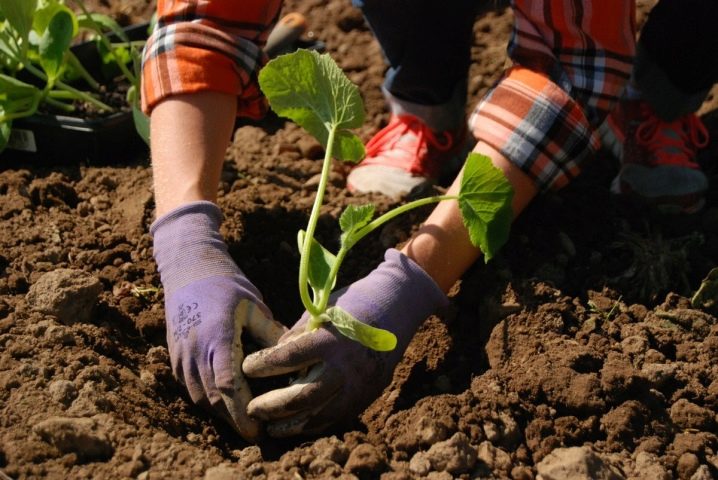
The nuances of care
Although pumpkin grows in different soils, it is best to provide it with a fertile composition. If the soil is poor in trace elements, it must be fertilized with a bucket of manure.
Pumpkin loves sunny places. In the shade, the harvest is small, or the fruits will not tie at all. Adult vegetables can drown out the germination of all types of weeds, but until the stems of the plant get stronger, it is necessary to weed the aisles 2-3 times.
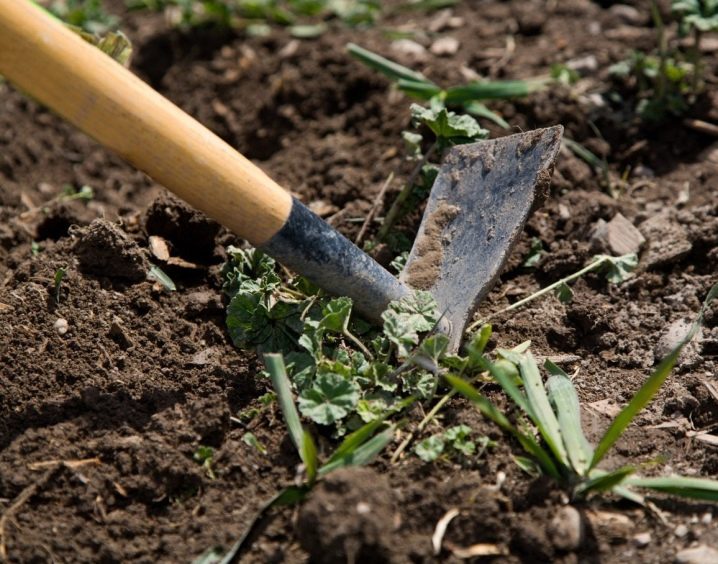
Experienced gardeners, in order to avoid a large number of ovaries, gradually pinch growth points on the stems of the vegetable. After all, the plant is capable of producing 2-3 large fruits, the rest will still not have time to mature normally.
The pumpkin does not need to be watered often. Watering is necessary only until the moment of germination. If the summer is hot, of course, you need to water young immature plants. When the fruits are set, stagnant water will have a bad effect on the development of the plant, which will lead to diseases. The roots of the pumpkin are powerful, they will extract water for themselves even from the lower layers. In the Moscow region, in a rainy summer, in order to prevent rotting of fruits, slate, plywood, and tiles are placed under each fruit.
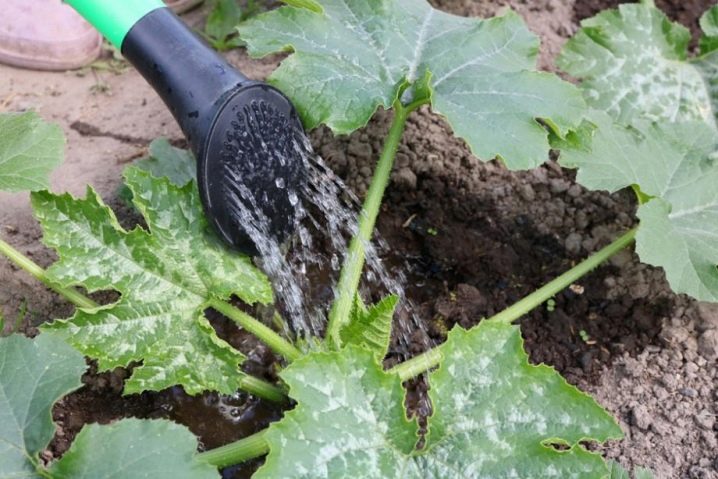
Agronomists prefer not to fertilize fertile land. If the soil lacks trace elements, you will definitely need to fertilize the crop at least three times over the summer.
- Two weeks after germination, it is necessary to dilute the mullein infusion (1 liter per ten-liter bucket of water) and water the plants with about 10 liters of solution per 5 bushes.
- After the appearance of the fifth true leaf, the pumpkin is fed with nitrophos. A tablespoon of fertilizer is scattered under each plant, then covered with a rake.
- The third dressing is applied when the whips begin to form. A tablespoon of nitrophoska is diluted in a container with water and watered with 10 liters under the bush.
- Pumpkin responds well to wood ash fertilization, once a month, one glass of ash is scattered under each bush and embedded in the soil.
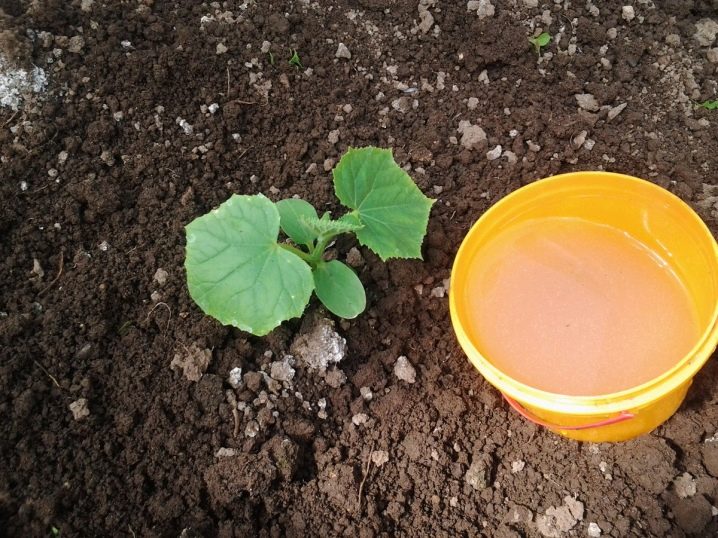
When the fetus is tied, you need to pinch off the lash 1 m above it. 2-3 fruits are left on the plant. Weak lashes and lower leaves are removed so that the plant gives all its strength to the formation and growth of fruits. If the goal is to grow a huge pumpkin, then one fruit is left on the bush, pinching off all the side shoots and a whip 1 m from it.
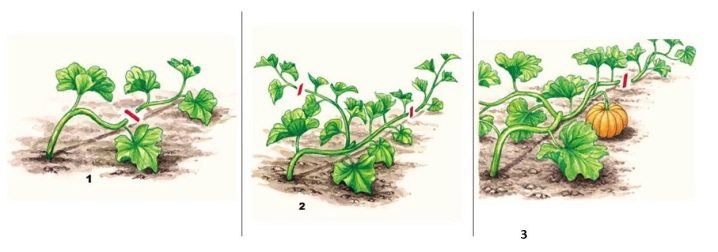
Diseases and pests
To protect crops from diseases, pests, marigolds, nasturtium, thyme, corn, and onions are planted next to the pumpkin. Potatoes should not be planted close, as they have common diseases with pumpkin. In hot years, the growth and development of plants can be delayed by aphids. Having found aphids on the bushes, you need to immediately carry out the treatment. If cold rainy weather sets in in August, the pumpkins may be affected by powdery mildew.You should spray the bushes with one of the drugs designed to combat this disease, preparing it according to the instructions.
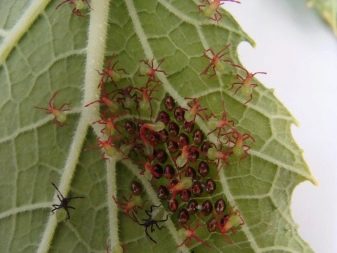
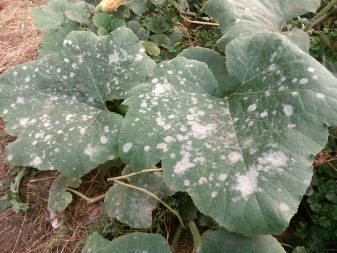
Be sure to follow the recommendations for caring for plants, follow the agrotechnics of growing pumpkin, and your plants will be strong and healthy, and will give a good harvest.
Harvesting
You need to harvest pumpkins when they are fully ripe. In the middle lane, this is the first half of September. The leaves of the plant will dry out, the stalk will harden, the fruits will become characteristic for this variety of color - these are signs of pumpkin ripening. It's time to start harvesting. If the fruits did not have time to ripen, there is no need to be upset. It is important to have time to pluck them before frost, they ripen in a warm, well-ventilated room.
Ripe fruits are harvested very carefully, keeping the stalk about 10 cm and without damaging the peel.
Pumpkin is a common and important crop. By following these simple tips for growing pumpkin, you will get a rich harvest every year.
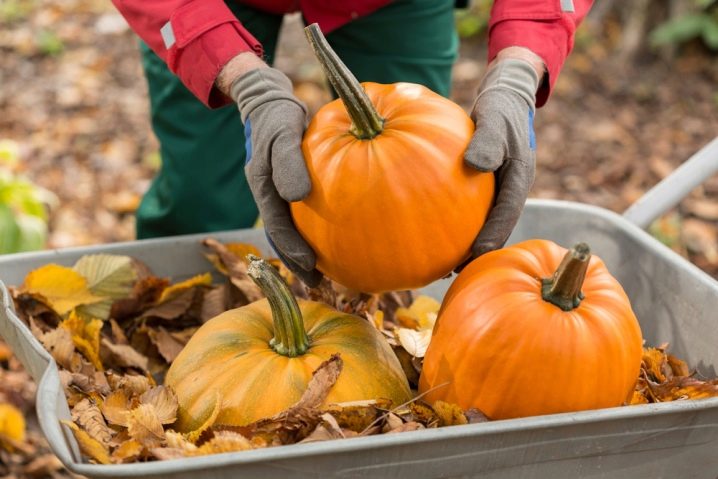













The comment was sent successfully.